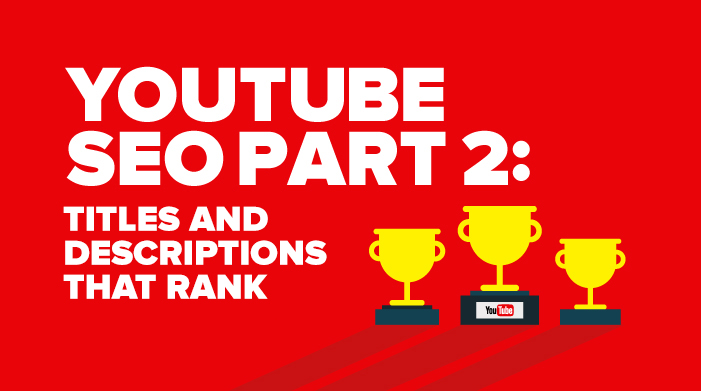
This is the second in a three-part series on maximizing SEO for YouTube. See part one on keywords. And part three on YouTube tags, playlists, annotations and more.
Notice how some YouTube search results are served up much more appetizing than others?
So do your customers, prospects and potential business partners. How do you create YouTube titles and descriptions that are more likely to attract viewers?
After you’ve identified your most powerful keywords, it’s time to write your video title and video descriptions. But first, some general tips on implementing keywords.
Keyword Tips
- Be user focused. Google focuses on searcher intent – not just keywords. It is getting much better at understanding semantic meaning. For example, Google knows it’s very likely that the word “flowers” is relevant in an article in which the word “gardening” occurs, while this is not true for the term “television.” This means it’s no longer about using the right single words – it’s about providing context around them. Writers today need to focus less on keywords and more on what those keywords actually mean to people.
- Be natural. Keywords and phrases should be incorporated naturally into page content. You are writing for people before search engines, and it’s important that they can easily digest the copy. If the keywords feel or sound forced, then they probably are.
YouTube video title
The video title is one of the most important tags for search engine ranking. It is the first line of clickable text in Google search results, so it should be treated as an advertisement that lets people know what information they can expect to see in the video.
- YouTube titles can be 65-70 characters (including spaces).
- Use title case.
- Write so it is clear what the video is about even when the title is displayed out of context.
- Use a sentence phrase-like structure. It does not need to be a complete sentence, but it shouldn’t be a bunch of keywords separated by commas.
- Use conversation-type keywords where they are natural (e.g., “how do you bake a cake?”). Words that match the search query will appear bold.
- Insert primary keyword phrases as close to the start of the title as possible. Search engine spiders scan from left to right and can be sporadic; it’s best to give them the keyword as soon as possible.
- Insert your company name at the end of the title preceded by a pipe bar or hyphen (not required, but best practice). Use your company name in the same way throughout all videos and on your website.
YouTube video description
The description displays as the few lines of text – below the video title – in search engine results. It serves as a description of the video, helping searchers identify whether the video is relevant to their search query. The description also appears below the video title when people watch the video on YouTube.
- The total YouTube description can be up to 5,000 characters. YouTube will display 150-170 characters, and the viewer must click “See More” for the full description. Since YouTube can’t “watch” your video to find its content, it’s important to include in the description high-quality, relevant copy for SEO. Take advantage of this space to include keywords (words that match the search query will appear bold), an outline of what happens in the video, and even an abbreviated transcript, if applicable.
- Only 150 characters (including spaces) of your YouTube description (up to 5,000 characters) will display on search engine results pages. Thus, it is important your first 150 characters provide a general summary of the video to help searchers determine whether the video matches their search query.
- Insert primary keyword phrases as close to the start of the description as possible.
- If you want people to visit a website after viewing the video, include the website URL in the first 150-170 characters.
- Descriptions should complement video titles, not repeat them.
- Descriptions should include your company name, particularly if it’s not included in the video title.
- This is a good place to include the location (city, state, other regional keywords).
More on YouTube and SEO
Sign up for our email list on the upper right side of this page so you don’t miss the last post in our three-part series on YouTube SEO. We’ll dive deeper on other ways to attract more of the right viewers to your videos.

